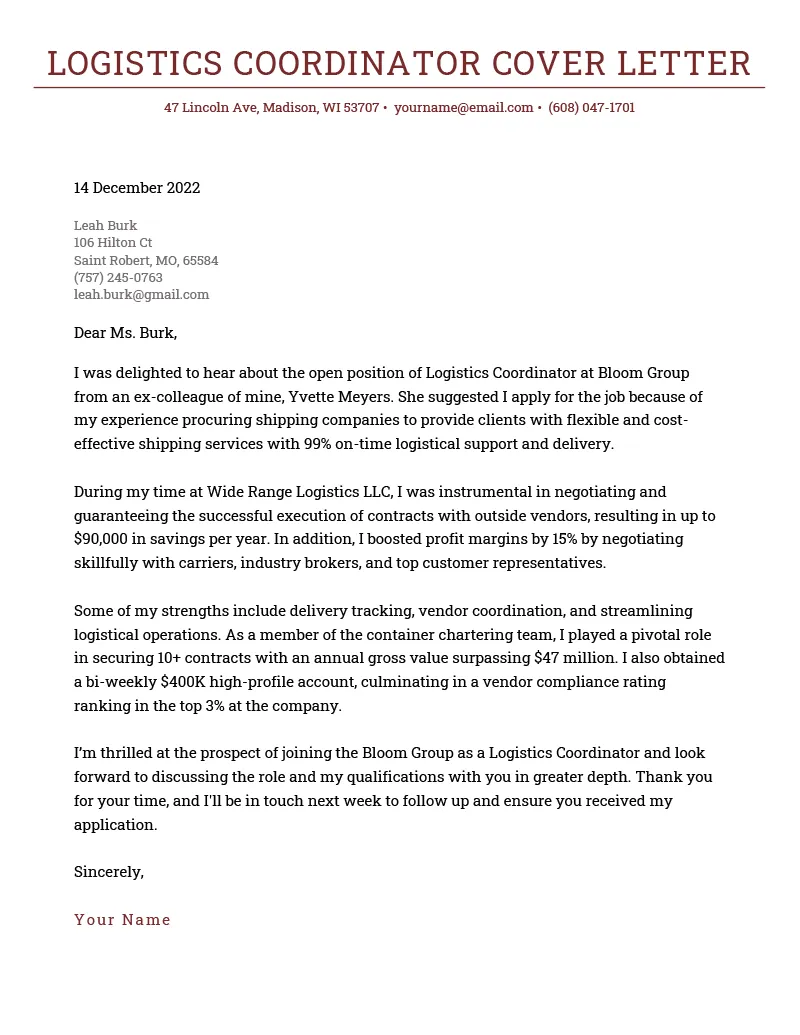Crafting a Compelling Logistics Job Cover Letter
A well-crafted logistics job cover letter is your first opportunity to make a positive impression on a potential employer. It’s your chance to showcase not just your skills and experience, but also your personality and enthusiasm for the role. A strong cover letter complements your resume, providing context and highlighting your key accomplishments in a way that a resume alone cannot. By carefully constructing your cover letter, you significantly increase your chances of getting noticed and securing an interview. Remember, it is not just a formality; it’s a strategic tool in your job search arsenal. This guide will equip you with the knowledge to write a cover letter that stands out.
Understanding the Purpose of a Cover Letter
The primary purpose of a cover letter is to introduce yourself, express your interest in a specific job, and explain why you are a suitable candidate. Unlike your resume, which provides a factual overview of your qualifications, a cover letter allows you to tell a story. It enables you to connect your skills and experiences directly to the requirements of the job, demonstrating your understanding of the company and the role. The cover letter serves as a bridge, guiding the hiring manager from your qualifications to your potential contributions to the organization. Moreover, it allows you to address any specific concerns or gaps in your experience, providing context and perspective.
Highlighting Your Relevant Skills
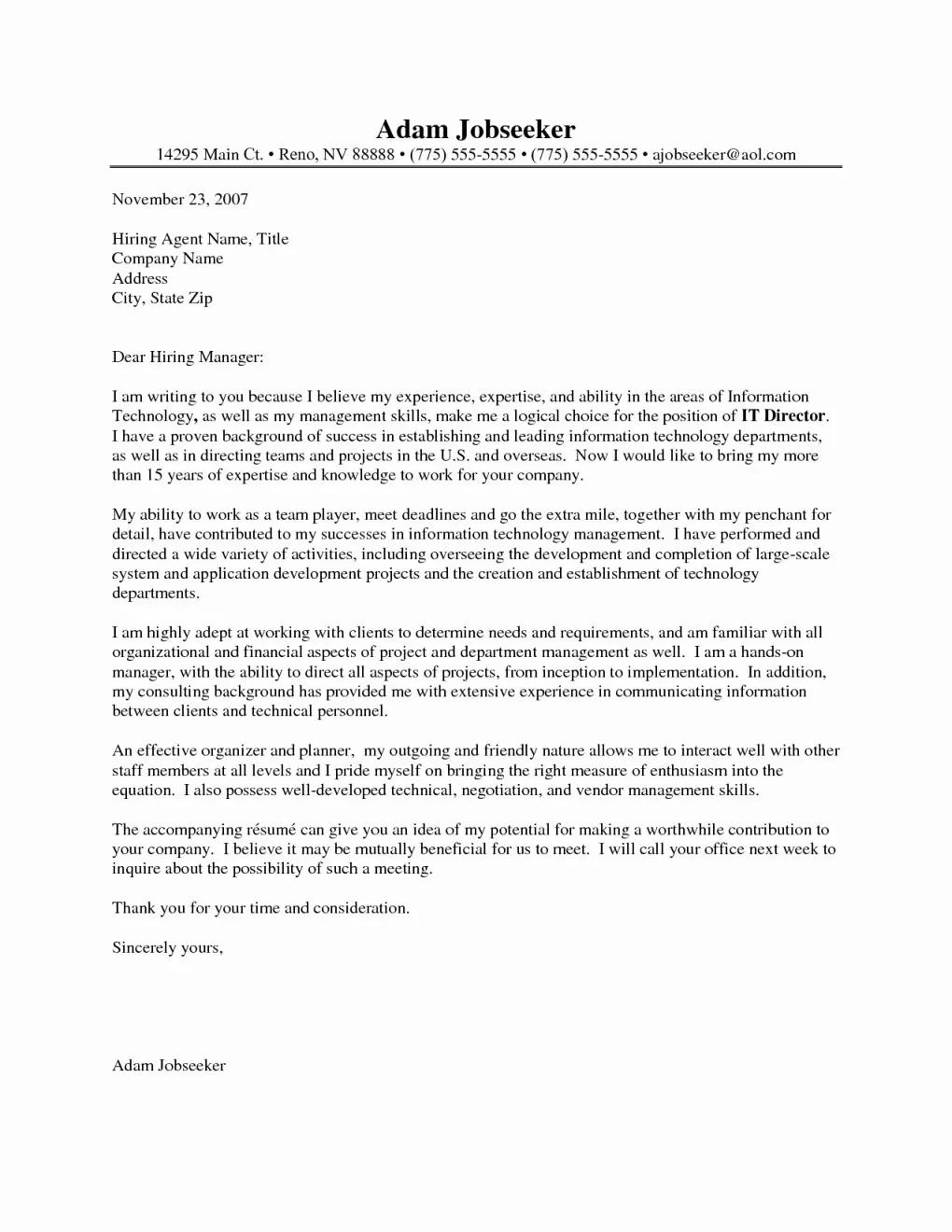
Your cover letter should prominently feature the skills most relevant to the logistics job you’re applying for. This is your chance to showcase your expertise in areas such as supply chain management, inventory control, transportation, and warehousing. Carefully review the job description and identify the key skills the employer is seeking. Then, provide specific examples of how you’ve utilized these skills in previous roles. Quantify your accomplishments whenever possible, using numbers and data to demonstrate the impact you’ve made. Remember to tailor your skills to the specific requirements outlined in the job posting. This targeted approach will make your application more compelling and demonstrate that you understand the role and its demands. Highlight experiences that involved optimizing logistics processes, reducing costs, or improving efficiency.
Researching the Company and Tailoring Your Letter
Before you start writing, research the company thoroughly. Understand their mission, values, and current projects. Visit their website, read news articles, and check their social media presence to gain insights into their culture and operations. This information is crucial for tailoring your cover letter to the specific company. Show the hiring manager that you’ve taken the time to learn about their business and that you understand their needs. Address your cover letter to a specific person whenever possible; this shows initiative and attention to detail. Mention specific projects or initiatives that resonate with the company’s goals. The more personalized your cover letter, the more likely it is to capture the hiring manager’s attention and demonstrate your genuine interest in the position.
Essential Components of a Logistics Cover Letter
Your Contact Information and the Date
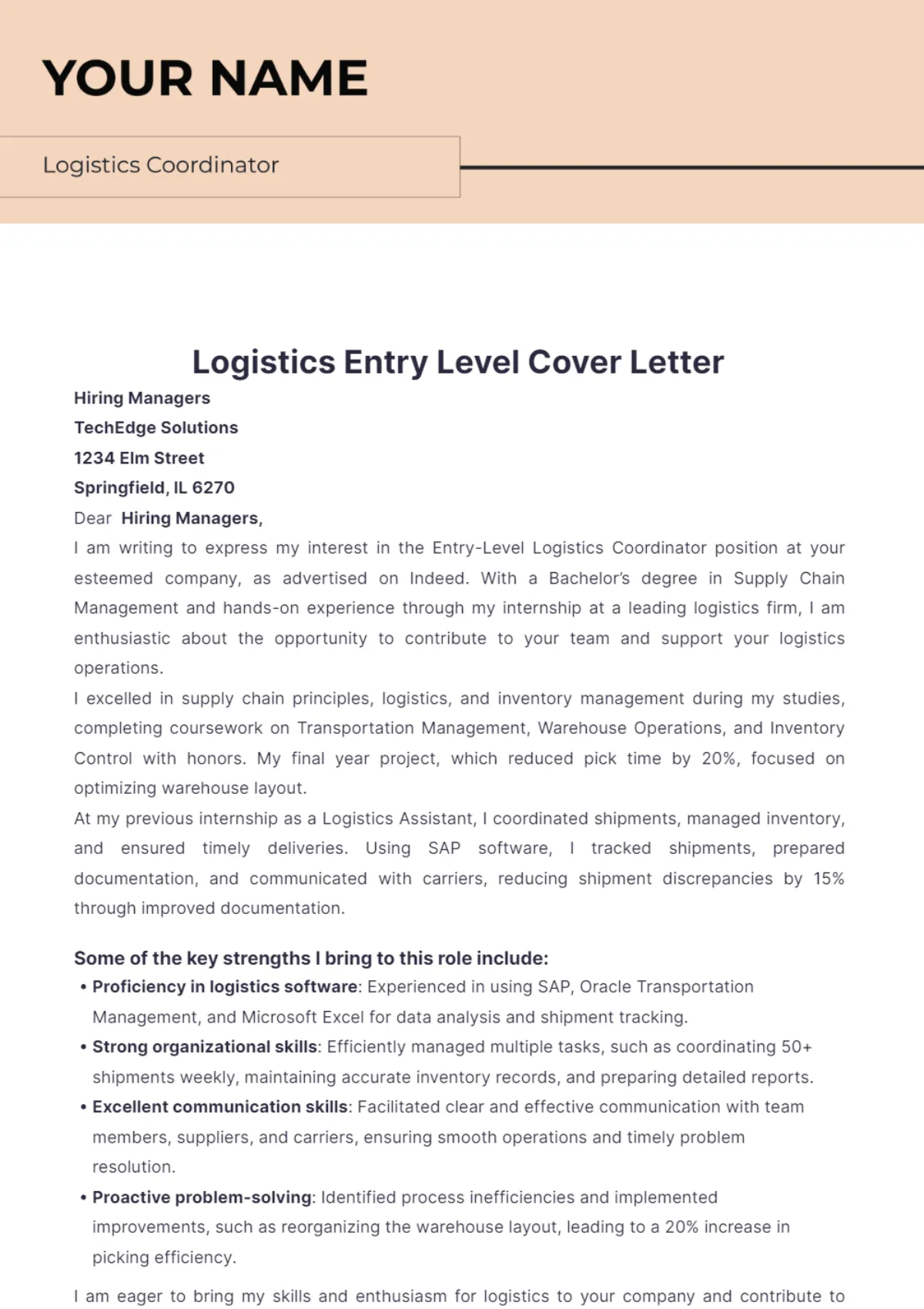
At the top of your cover letter, include your contact information: your name, phone number, email address, and optionally, your LinkedIn profile URL. Following this, include the date. This helps the hiring manager easily contact you and also indicates the recency of your application. Make sure your contact information is accurate and professional. Your email address should be professional as well; avoid using nicknames or unprofessional language. This is a basic, but critical, element that ensures the hiring manager can reach you quickly and efficiently.
The Hiring Manager’s Information
If possible, address your cover letter to a specific hiring manager or the appropriate contact person. Research the company’s website or LinkedIn to find the name and title of the person responsible for hiring for the role you are applying for. This personal touch shows that you have taken the initiative to learn more about the company and demonstrates your attention to detail. If you can’t find a specific name, use a professional salutation like “Dear Hiring Manager.” This shows that you have made an effort to personalize your cover letter. The more specific and personalized your cover letter, the more likely it is to make a positive impression.
A Strong Opening Paragraph
Your opening paragraph should immediately capture the reader’s attention. Start by stating the position you are applying for and where you found the job posting. Briefly mention why you are interested in the role and the company. Highlight one or two of your most relevant skills or experiences that align with the job description. Aim to create a compelling first impression that sets the tone for the rest of your letter. Avoid generic opening lines. Instead, convey your enthusiasm for the opportunity and showcase your understanding of the company’s needs. The first paragraph is your chance to make a strong statement and encourage the hiring manager to read further.
Body Paragraphs Highlighting Your Achievements
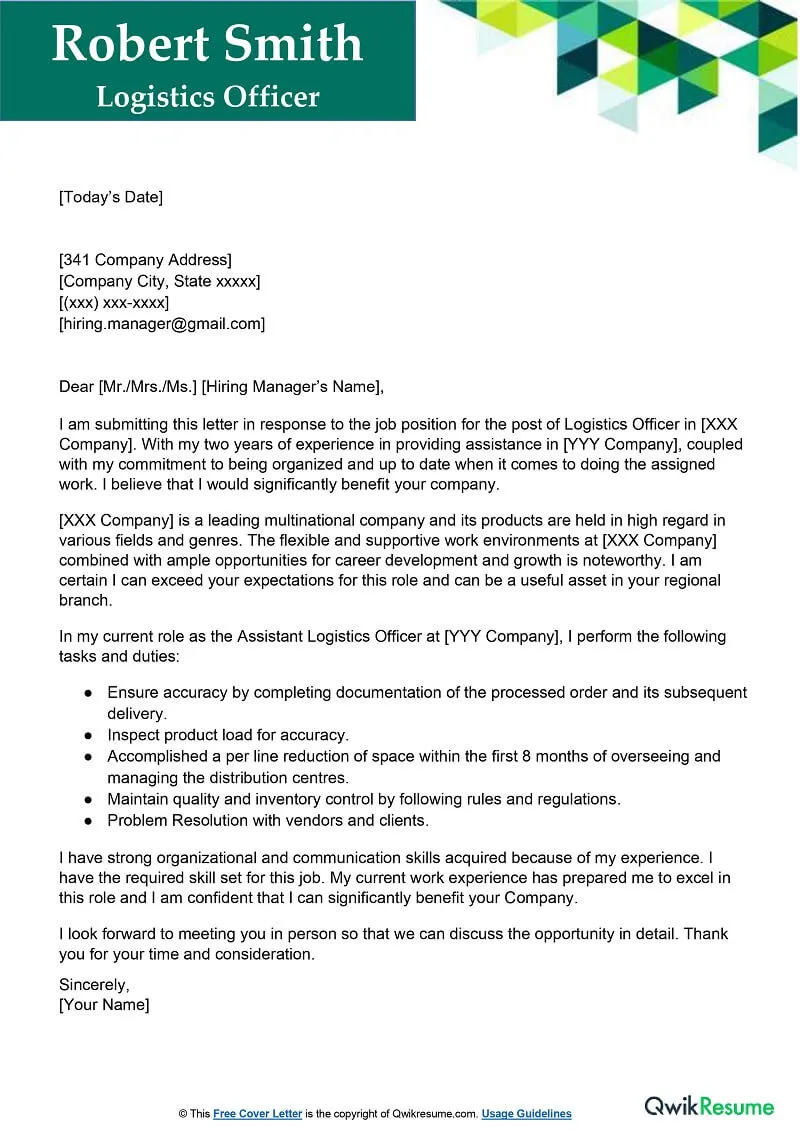
The body of your cover letter is where you showcase your skills and experiences in detail. Focus on highlighting your achievements, not just your responsibilities. Use the STAR method (Situation, Task, Action, Result) to provide context and demonstrate your impact. For each achievement, describe the situation, the task you were assigned, the actions you took, and the results you achieved. Back up your claims with quantifiable data whenever possible, such as the percentage of cost reduction, the increase in efficiency, or the number of projects successfully completed. Tailor your examples to the specific requirements of the job description, ensuring that your accomplishments align with the company’s needs.
Quantifying Your Accomplishments
Use numbers and data to demonstrate the impact of your achievements. Instead of saying ‘Improved efficiency,’ state ‘Improved warehouse efficiency by 15%.’ Instead of ‘Managed a team,’ say ‘Managed a team of 10 logistics professionals.’ Quantifying your accomplishments adds credibility to your claims and provides concrete evidence of your skills and abilities. This enables the hiring manager to understand the direct benefit of your past contributions. This also enables the hiring manager to understand the direct benefit of your past contributions. This specificity makes your cover letter much more impactful and memorable.
Showcasing Your Knowledge of Logistics Software
Many logistics jobs require proficiency in specialized software. Mention the software you are familiar with, such as SAP, Oracle, or specific transportation management systems (TMS). Providing this information demonstrates your readiness to perform the job functions effectively from day one. If the job description specifies particular software, be sure to mention your experience with those applications. Include how you utilized this software to improve processes or achieve specific results. If you have experience with related software, mention that as well. Knowledge of logistics software is a key differentiator in today’s job market.
Demonstrating Your Problem-Solving Skills
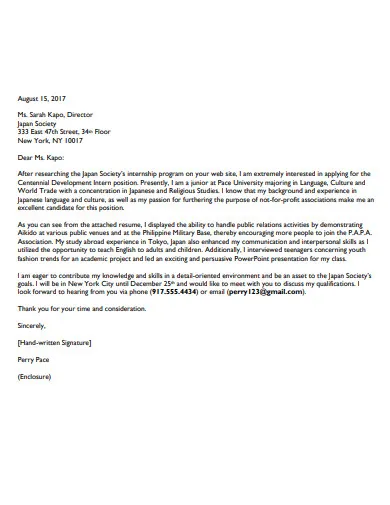
Logistics professionals frequently encounter complex problems. Showcase your problem-solving skills by describing how you have addressed challenges in the past. Use the STAR method to explain a specific situation, the task you faced, the actions you took to resolve the issue, and the positive results. Detail your process of identifying and analyzing the problem. Explain the steps you took to develop and implement a solution. Highlight any innovative approaches you used or any improvements you achieved as a result. This demonstrates your ability to think critically and adapt to changing situations.
A Confident and Engaging Closing
Your closing paragraph should reiterate your interest in the position and express your enthusiasm for the opportunity. Reiterate your core skills and briefly summarize why you are a good fit for the role. Include a call to action, such as stating your availability for an interview and your eagerness to discuss how you can contribute to the company’s success. Thank the hiring manager for their time and consideration. Keep it concise and professional. Avoid clichés and overly formal language. End with a positive and enthusiastic note that leaves the reader with a memorable impression.
Proofreading and Formatting Your Cover Letter
Before submitting your cover letter, proofread it carefully. Check for any typos, grammatical errors, and formatting inconsistencies. Errors can undermine your credibility and make a negative impression. Have a friend or colleague review your letter as well. Formatting matters; use a professional font, such as Times New Roman or Arial, and maintain consistent spacing and margins. Ensure your cover letter is easy to read and visually appealing. A well-formatted and error-free cover letter demonstrates your attention to detail and professionalism.
Key Skills to Include in Your Cover Letter
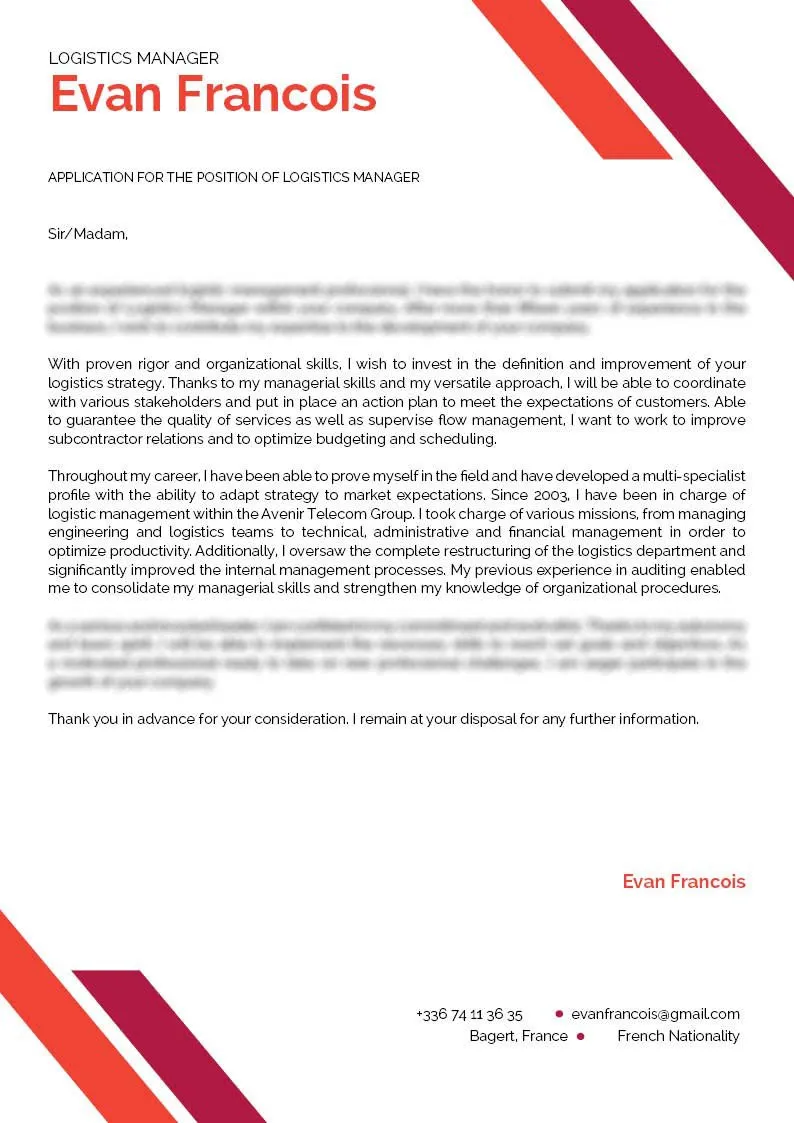
Highlighting the right skills is critical to your cover letter’s success. Consider the job description and emphasize the abilities that align with the role’s requirements. Common skills to include are communication, problem-solving, and technical proficiency. Focus on both hard and soft skills that demonstrate your suitability for the position.
Communication and Interpersonal Skills
Logistics jobs often require effective communication with various stakeholders, including suppliers, customers, and team members. Highlight your ability to communicate clearly and concisely, both verbally and in writing. Provide examples of how you have successfully communicated complex information. Also, address how you collaborated with different teams to achieve shared goals. Highlight any experiences that required negotiation, conflict resolution, or presentation skills. Strong communication is key to coordination and is essential in all logistics roles.
Organizational and Time Management Skills
Logistics involves managing multiple tasks and deadlines simultaneously. Demonstrate your organizational and time management skills by highlighting your ability to prioritize tasks, manage time effectively, and meet deadlines. Describe instances where you successfully managed complex projects or handled multiple responsibilities at once. Mention any organizational tools or techniques you use to stay on track. Showcasing these skills proves your ability to manage the day-to-day demands of logistics work effectively.
Analytical and Problem-Solving Abilities
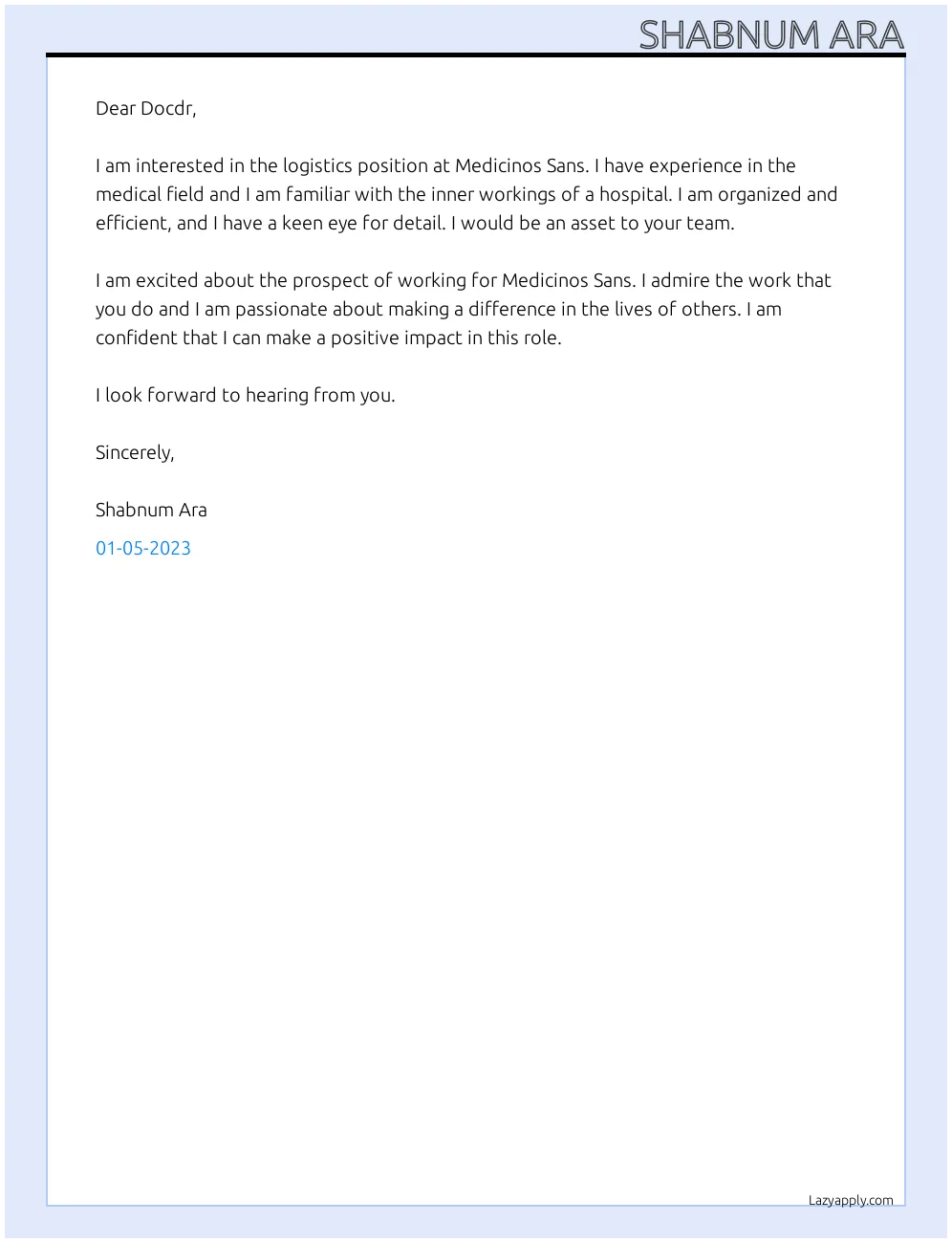
Logistics professionals often encounter unexpected challenges. Showcase your analytical and problem-solving abilities by describing how you have identified, analyzed, and resolved logistical issues. Provide examples of how you used data to improve processes, reduce costs, or prevent delays. Detail any instances where you were able to identify root causes and implement effective solutions. These skills are crucial for driving efficiency and minimizing disruptions.
Attention to Detail and Accuracy
Accuracy is paramount in logistics. Highlight your attention to detail by describing how you have ensured the accuracy of records, minimized errors, and adhered to industry regulations. Mention any experiences where you implemented quality control measures or improved processes. Provide specific examples of how you have consistently maintained a high level of accuracy in your work. This is a critical skill for ensuring smooth operations and compliance.
Common Mistakes to Avoid in Your Cover Letter
Avoiding common mistakes will increase your chances of securing an interview. Being aware of what to avoid can make your cover letter stand out. Addressing these common pitfalls will significantly enhance your chances of success.
Generic and Vague Language
Avoid using generic and vague language in your cover letter. Be specific and provide concrete examples of your skills and experiences. Don’t just say you are a good communicator; describe a situation where you successfully communicated complex information. Instead of stating that you are a team player, give an instance where you collaborated with a team to achieve a shared goal. Replace general statements with specific achievements and measurable results.
Focusing Solely on Your Responsibilities
While listing your responsibilities is important, don’t focus solely on them. Instead, highlight your achievements and the impact you made in each role. Show the value you brought to your previous employers. Quantify your accomplishments whenever possible. This demonstrates your capabilities and makes your cover letter more engaging.
Typos and Grammatical Errors
Typos and grammatical errors can undermine your credibility. Proofread your cover letter carefully before submitting it. Use spell-check and grammar-check tools, but also read the letter multiple times. Consider having a friend or colleague review it as well. Errors suggest a lack of attention to detail and can be easily avoided with careful proofreading.
Submitting a Generic Cover Letter
Avoid submitting a generic cover letter that is not tailored to the specific job and company. Tailor your cover letter to each job application. Show the hiring manager that you understand their needs and are a good fit for the role. Demonstrate that you’ve taken the time to research the company and align your skills with their requirements. Personalized cover letters demonstrate your enthusiasm and increase your chances of securing an interview.
Review and Submission of Your Cover Letter
The final steps of cover letter preparation are formatting and submission. Attention to these elements will improve the presentation of your application.
Formatting Your Cover Letter
Use a professional font, such as Times New Roman or Arial, and maintain consistent spacing and margins. Make sure your cover letter is easy to read and visually appealing. Avoid using excessive formatting or fancy fonts. Ensure your contact information, the date, the hiring manager’s information, the body paragraphs, and the closing are clearly presented. Professional formatting demonstrates your attention to detail and professionalism.
Saving and Submitting Your Cover Letter
Save your cover letter as a PDF to preserve the formatting. Use a clear and concise file name, such as “YourName_CoverLetter_JobTitle.” Submit your cover letter along with your resume. Follow the application instructions carefully. Always double-check that you have included all required documents and that your contact information is accurate. Ensure your cover letter reaches the right person or email address. Following these steps helps ensure that your application is received and reviewed.
